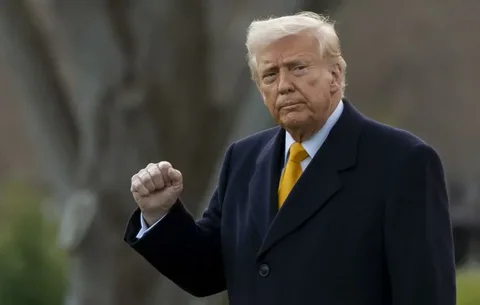US tariffs have posed a significant thorn in Sony Group Corp.’s side, causing a likely $700 million blow to operating profits and an ominous cloud of doubt over the company’s future. In its latest projection on the fiscal year ending March 2026, Sony is seeing an operating profit of ¥1.28 trillion—well under analysts’ median expectations of ¥1.5 trillion. The major cause of this dismal prognosis is the increasing pressure of US tariffs, particularly on Sony’s PlayStation 5 consoles made in China that are greatly dependent on the US market. With increasing US tariffs, Sony stands at the center of cross-border trade tensions and changing consumer trends.
Read More: Meituan Disrupts Brazil: $1B Bold Step in Food Delivery
US Tariffs Strike Sony’s Central Businesses
US tariffs affect Sony’s operations comprehensively. The gaming behemoth stated that it stands to lose as much as ¥100 billion ($700 million) from US tariffs alone. The PlayStation 5, largely made in China, is confronting increasing costs as it enters the American market—a prime region for Sony’s console business. Sony raised PS5 prices in Europe, Australia, and New Zealand earlier in order to cover manufacturing expenses. Now, with additional burden from US tariffs, price increases in the US may follow soon, which could dampen consumer demand and slow the upgrade cycle from PS4 to PS5. Although showing a strong performance in music, film, and other entertainment areas, US tariffs continue to be a nagging issue for Sony’s management.
Share Buyback Boosts Market Sentiment Amid Tariff Troubles
Sony’s decision to initiate a ¥250 billion ($1.7 billion) share buyback was a relief amid the US tariffs turmoil. Shareholders welcomed the news, with Sony’s shares rising as much as 4.5% after the announcement. The company is also planning to spin off its financial services business, which will be listed officially on September 29. While the share buyback indicates that Sony is being serious about shareholder interests, the wider pressure from US tariffs continues to shroud the larger picture. Analysts point out that although financial restructuring could bring relief in the short term, it is imperative to tackle the long-term consequences of US tariffs on core hardware manufacturing and global sales.
Also Read: Artificial Intelligence Revolution: Saudi Arabia’s HUMAIN Shakes Global Tech
PlayStation 5 and Gaming Segment Grapple With Delays and Competition
While Sony’s gaming division recorded a quarterly operating profit of ¥203.7 billion, beating forecasts, the larger picture is far from good. Sales of PS5 declined from 20.8 million units to 18.5 million in one year. The major reason: the postponement of Rockstar Games’ Grand Theft Auto VI, which was to spearhead a gargantuan PS5 upgrade cycle. With US tariffs already compressing margins, below-forecast sales further put Sony’s core gaming business under pressure. Furthermore, competition is intensifying with Nintendo planning to launch its Switch 2 console in June, further threatening Sony’s market share. Experts caution that unless aggressive action is taken, US tariffs risk undermining Sony’s dominance in the gaming space.
Wider Impacts: Image Sensors and Film Division Also At Risk
The ripple impact of US tariffs goes far beyond gaming. Sony’s image sensor operation, a key supplier of smartphones by Apple and Xiaomi, is also at risk. With smartphone demand in the US slipping as costs rise, orders for image sensors are likely to fall. In the film industry, ex-US President Donald Trump’s suggestions of fresh tariffs on international films add another level of uncertainty. Sony’s best-selling franchises such as the Demon Slayer franchise may experience release difficulties or generate losses in the US. While tariffs penetrate all corners of Sony’s business, even its diversified entertainment strategy provides some buffer.
Sony’s strength will surely be put to the test in months to come. With a $700 million hit directly attributed to US tariffs, the company has to tread through a perfect storm of trade tensions, increasing production costs, and stiffening competition. While the share buyback and spinoff strategy are reflective of strategic vision, they might prove inadequate if US tariffs continue to afflict its highest-margin divisions. Investors and analysts will be keenly watching how Sony responds to this intricate and dynamic global environment.
For More Trending Business News, Follow Us 10xtimes News






